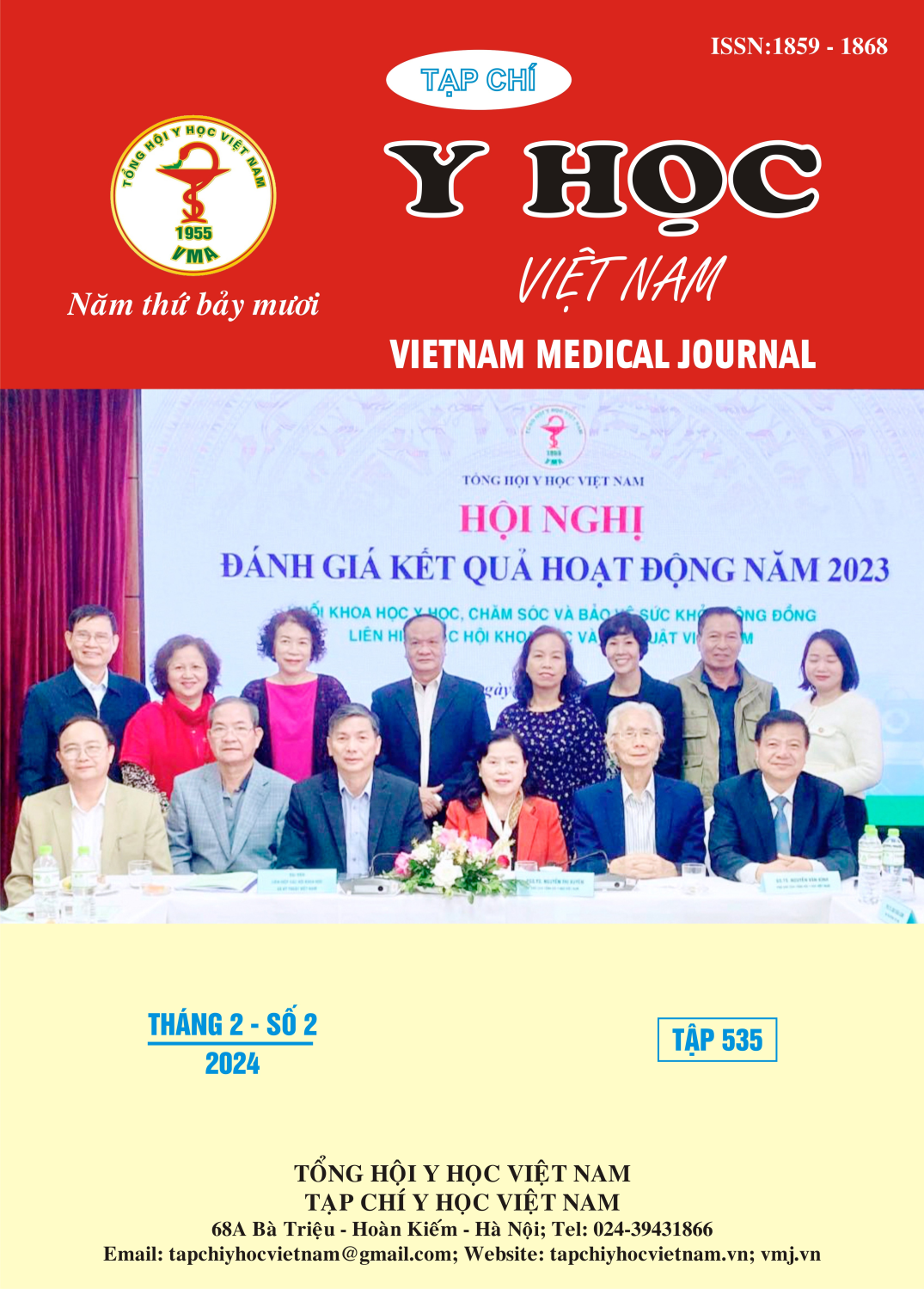RESULTS OF MANDIBULAR RECONSTRUCTION BY FIBULA FLAP USING SURGICAL CUTTING GUIDES
Main Article Content
Abstract
Backgrounds: We evaluated the results of computer-assisted mandibular reconstruction using open-source software in Vietnam. Patients and methods: This study was conducted on 28 patients who had primary mandibular reconstruction with a microvascular free fibula flap, July 2021 to October 2022. The age of patients ranged from 14 to 63 years old. Virtual surgical planning was perfomed with three open-source softwares (ITK-SNAP, Meshlab, and Blender). The computed tomography scans of preoperative virtual surgical planning and two-week postoperative mandible were used for assessment of accuracy of this procedure. Measurements were used included intercondylar distance, intergonial angle distance, intercoronoid distance, fibula segment length, and gonial angle. Results: The mean of each measurement was similar in both preoperative and postoperative stages: intercondylar distances, 102.79 ± 7.53 mm vs. 102.61 ± 7.39 (p = 0.913); intergonial angle distances, 92.59 ± 6.06 mm vs. 93.83 ± 6.99 (p = 0.064); intercoronoid distances, 98.29 ± 7.03 mm vs. 97.56 ± 5.77 (p = 0.356); fibula segment lengths, 40.19 ± 10.18 mm vs. 39.87 ± 9.80 (p = 0.274); and gonial angles, 121.83 ± 4.08° vs. 122.94 ± 6.98° (p = 0.380). The mean number of osteotomies was 1.39 ± 0.79, and the mean fibula segment lengths was 39.87 ± 9.80 mm (n = 69). The mean follow-up time was 9.86 ± 5.96 months (range, 3 to 22 months). The postoperative occlusion and aesthetics in all patients were satisfied. There was nearly no complication, except for a case had local inflammation due to a lossen screw. Conclusion: Open-source software for CAD/CAM-assisted mandibular reconstructions is a safe and useful technique, with post-operative results were comparable to other commercial softwares. The planning time and printing cost are also reasonable for both surgeons and patients.
Article Details
Keywords
mandibular reconstruction, free fibula flap, open-source software, computer-assisted design, virtual surgical planning
References
2. Ren W, Gao L, Li S, et al. Virtual Planning and 3D printing modeling for mandibular reconstruction with fibula free flap. Med Oral Patol Oral Cir Bucal. 2018;23(3):e359-e366.
3. Metzler P, Geiger EJ, Alcon A, Ma X, Steinbacher DM. Three-dimensional virtual surgery accuracy for free fibula mandibular reconstruction: planned versus actual results. J Oral Maxillofac Surg. 2014;72(12):2601-2612.
4. Ganry L, Hersant B, Quilichini J, Leyder P, Meningaud JP. Use of the 3D surgical modelling technique with open-source software for mandibular fibula free flap reconstruction and its surgical guides. J Stomatol Oral Maxillofac Surg. 2017;118(3):197-202.
5. Brown JS, Barry C, Ho M, Shaw R. A new classification for mandibular defects after oncological resection. Lancet Oncol. 2016;17(1): e23-30.
6. Dell’Aversana Orabona G, Abbate V, Maglitto F, et al. Low-cost, self-made CAD/CAM-guiding system for mandibular reconstruction. Surgical Oncology. 2018;27(2):200-207.
7. Ritschl LM, Kilbertus P, Grill FD, et al. In-House, Open-Source 3D-Software-Based, CAD/CAM-Planned Mandibular Reconstructions in 20 Consecutive Free Fibula Flap Cases: An Explorative Cross-Sectional Study With Three-Dimensional Performance Analysis. Front Oncol. 2021;11:731336.
8. Foley BD, Thayer WP, Honeybrook A, McKenna S, Press S. Mandibular reconstruction using computer-aided design and computer-aided manufacturing: an analysis of surgical results. J Oral Maxillofac Surg. 2013;71(2):e111-119.
9. Geusens J, Sun Y, Luebbers HT, Bila M, Darche V, Politis C. Accuracy of Computer-Aided Design/Computer-Aided Manufacturing-Assisted Mandibular Reconstruction With a Fibula Free Flap. J Craniofac Surg. 2019;30(8):2319-2323.


